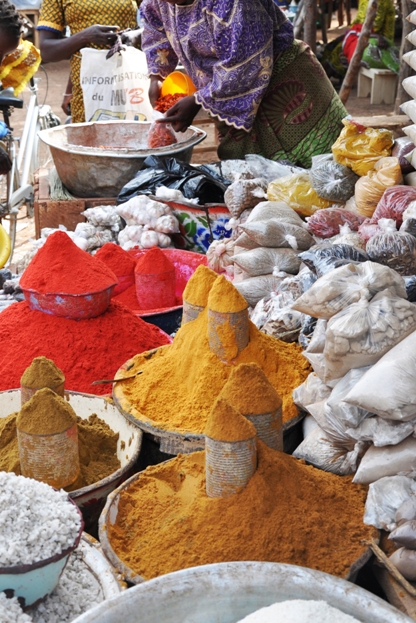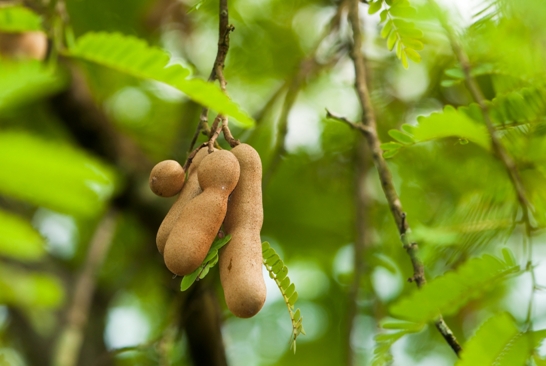
Africa played an important part in Silk Road trade from antiquity through modern times when much of the Silk Road trade was supplanted by European corporate conglomerates like the Dutch and British East India Companies who created trade monopolies to move goods around the Old World instead. But in the heyday of the Silk Road, merchants travelled to Africa to trade for rare timbers, gold, ivory, exotic animals and spices. From ports along the Mediterranean and Red Seas to those as far south as Mogadishu and Kenya in the Indian Ocean, goods from all across the continent were gathered for the purposes of trade.
One of Africa’s contributions to world cuisine that is still widely used today is sesame seeds. Imagine East Asian food cooked in something other than its rich sesame oil, how about the quintessential American-loved Chinese dish, General Tso’s Chicken? How ‘bout the rich, thick tahini paste enjoyed from the Levant and Middle East through South and Central Asia and the Himalayas as a flavoring for foods (hummus, halva) and stir-fries, and all of the breads topped with sesame or poppy seeds? Then think about the use of black sesame seeds from South Asian through East Asian foods and desserts. None of these cuisines would have used sesame in these ways, if it hadn’t been for the trade of sesame seeds from Africa in antiquity.
Given the propensity of sesame plants to easily reseed themselves, the early African and Arab traders probably acquired seeds from native peoples who gathered wild seeds. The seeds reached Egypt, the Middle East and China by 4,000 – 5,000 years ago as evidenced from archaeological investigations, tomb paintings and scrolls. Given the eager adoption of the seeds by other cultures and the small supply, the cost per pound was probably quite high and merchants likely made fortunes off the trade.
The earliest cultivation of sesame comes from India in the Harappan period of the Indus Valley by about 3500 years ago and from then on, India began to supplant Africa as a source of the seeds in global trade. By the time of the Romans, who used the seeds along with cumin to flavor bread, the Indian and Persian Empires were the main sources of the seeds.

Some spices of African origin that were traded along the Silk Road have become extinct. One such example can be found in wild silphion which was gathered in Northern Africa and traded along the Silk Road to create one of the foundations of the wealth of Carthage and Kyrene. Cooks valued the plant because of the resin they gathered from its roots and stalk that when dried became a powder that blended the flavors of onion and garlic. It was impossible for these ancient people to cultivate, however, and a combination of overharvesting, wars and habitat loss cause the plant to become extinct by the end of the first or second centuries of the Common Era. As supplies of the resin grew harder and harder to get, it was supplanted by asafetida from Central Asia.
Other spices traded along the Silk Road are used almost exclusively in African cuisines today – although their use was common until the middle of the first millennium in Europe and Asia. African pepper, Moor pepper or negro pepper is one such spice. Called kieng in the cuisines of Western Africa where it is still widely used, it has a sharp flavor that is bitter and flavorful at the same time – sort of like a combination of black pepper and nutmeg. It also adds a bit of heat to dishes for a pungent taste. Its use extends across central Africa and it is also found in Ethiopian cuisines. When smoked, as it often is in West Africa before use, this flavor deepens and becomes smoky and develops a black cardamom-like flavor. By the middle of the 16th Century, the use and trade of negro pepper in Europe, Western and Southern Asia had waned in favor of black pepper imports from India and chili peppers from the New World.
Grains of paradise, Melegueta pepper, or alligator pepper is another Silk Road Spice that has vanished from modern Asian and European food but is still used in Western and Northern Africa and is an important cash crop in some areas of Ethiopia. Native to Africa’s West Coast its use seems to have originated in or around modern Ghana and was shipped to Silk Road trade in Eastern Africa or to Mediterranean ports. Fashionable in the cuisines of early Renaissance Europe its use slowly waned until the 18th Century when it all but vanished from European markets and was supplanted by cardamom and other spices flowing out of Asia to the rest of the world.

Although not African, the Chinese Muslim explorer Zheng He deserves special mention as one of these great cultural diplomats and entrepreneurs. In the early 15th Century he led seven major sea-faring expeditions from China across Indonesia and several Indian Ocean ports to Africa. Surely, Chinese ships made regular visits to Silk Road ports from about the 12th Century on, but when Zheng came, he came leading huge armadas of ships that the world had never seen before and wouldn’t see again for several centuries. Zheng came in force, intending to display China’s greatness to the world and bring the best goods from the rest of the world back to China. Zheng came eventually to Africa where he left laden with spices for cooking and medicine, wood and ivory and hordes of animals. It may be hard for us who are now accustomed to the world coming on command to their desktops to imagine what a miracle it must have been for the citizens of Nanjing to see the parade of animals from Zheng’s cultural Ark. But try we must to imagine the wonder brought by the parade of giraffes, zebra and ostriches marching down Chinese streets so long ago – because then we can begin to imagine the importance of the Silk Road in shaping the world. (Words by Laura Kelley).

Thanks for this, Laura– very helpful in giving us an informed view of world history!